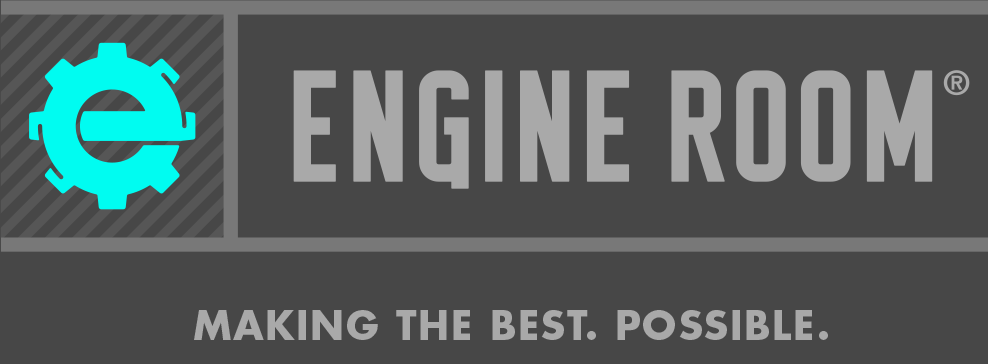 In the United States, besides federal, state, and local government websites, there are no enforceable regulations or standards for accessibility. Non-governmental websites don’t have any regulations to follow as set forth by the Americans with Disabilities Act (ADA) to present a website that’s inclusive and accessible for all. Even so, this doesn’t mean your website shouldn’t make website accessibility a priority.
In the United States, besides federal, state, and local government websites, there are no enforceable regulations or standards for accessibility. Non-governmental websites don’t have any regulations to follow as set forth by the Americans with Disabilities Act (ADA) to present a website that’s inclusive and accessible for all. Even so, this doesn’t mean your website shouldn’t make website accessibility a priority.
Disability impacts all of us, either directly or indirectly. There are 61 million American adults in the U.S. living with disabilities, or about 26 percent of adults nationwide. Not only does it benefit you to ensure your website is accessible to these Americans since they comprise over one-quarter of the population (and potentially one-quarter of your lead base), but without website accessibility, you also put yourself at risk of a lawsuit for not making your content available for all users.
While there are all kinds of laws protecting the rights of people with disabilities in homes, parks, businesses, and educational institutions, website accessibility does not have the same universal set of guidelines to follow. However, some standards can unify your development; universally-accepted protocols to make your website accessible for all potential users. These standards have been put in place by the World Wide Web Consortium, or W3C.
The Importance of Website Accessibility
When a website is accessible, information is presented through multiple sensory channels to extend the possible ways users can interact with and navigate your web content. These channels go beyond a regular point-and-click interface; so that when the need arises, keyboard-based control and voice-based navigation are available to those who need them.
When websites employ multisensory and multi-interactivity approaches, users with disabilities who want to use your website can access all the same content as nondisabled users. A strong, accessible website improves the user experience for all users.
Additionally, the W3C makes the point that accessible web practices overlap with:
- Strong mobile web design
- Better overall usability
- Accessibility for older users
- Search engine optimization
- Lower maintenance costs
- Increased audience reach
Web accessibility is broken down into four categories, which can be remembered using the acronym, “POUR”:
- Perceivable information and user interface
- Operable user interface and navigation
- Understandable information and user interface
- Robust content and reliable interpretation
Let’s take a look at what each of these categories means and how they can positively impact your website so it is more accessible for all of your users.
Perceivable Accessibility
When we talk about a webpage’s perceivability, we’re referring to the user’s ability to identify content and interface elements through the senses. Many users rely on their visual senses to perceive this information, but this is not the case for everyone. For others, perceivability may be through sound or touch, while some emerging technologies may also involve sensory cues for smell and taste.
Text Alternatives
One of the tenets of perceivable accessibility is ensuring that there are text alternatives for all non-text content. This is the best way to provide content for users who rely on large print, braille, speech, symbols, or simpler language. It should be concise and evoke the same kinds of experience as the non-text content. For example, a picture of a decadent chocolate cake should have alternative text that is as sumptuous and irresistible as the picture.
When non-text content is used for controls or navigation (like an arrow to navigate forward in the text), it should have a name to describe its purpose. If non-text content is purely for decoration or formatting, it should be implemented in a way that can be ignored by the assistive technology some users rely on.
Audio and Video Accessibility
An alternative should be available to present equivalent information so that this content is available to everyone who needs to access it, which may include captions, descriptive text, or sign language.
Operable Accessibility
Operability refers to the way the user navigates your website. Operability accessibility means that your users can use the controls, buttons, navigation, and all other interactive elements on your site. While for many users, this means that they can identify an interface control visually, they click, tap, or swipe, other users use a keyboard or voice commands as the only way they can operate, navigate, and control your website.
When your content is operable, it should be navigable beyond the use of a mouse or trackpad and should be operable using a keyboard interface without the need for the specific timing of individual keystrokes.
Adjustable Timing
Another important element of operable accessibility is timing. Users should be able to pause, stop, and resume automatic updating information with one keystroke, and that interruptions can be postponed or stopped. Additionally, users should be able to continue their activity even after a timed re-authentication or timeout without losing the data they’ve inputted.
There are many other standards for operability accessibility, including details like ensuring that nothing on a website flashes more than 3 times per second, to make content friendly for those who have seizures or seizure disorders, the size of link targets, and including section headings to describe and organize the content.
Understandable Accessibility
When technology is understandable, it’s consistent with how it’s presented and formatted. There is a predictability to the website in how it is designed and used. Understandability is all about remaining constant. It’s concise and matches the voice and tone of the audience so that users can comprehend the content and easily learn and remember how to use the interface.
There are all kinds of guidelines to follow to keep your website understandable for all users. These include:
- Providing supplemental content for any content that’s above a lower secondary education level
- Offering explanations and expanded forms for all abbreviations
- Sharing definitions and expanded meanings for unusual words, jargon, and idioms
- Identifying the pronunciation of words when the meaning of the word isn’t identifiable without knowing the pronunciation
- Establishing consistent navigation regardless of how your content is accessed
- Helping users avoid input mistakes and offering corrections when they happen, and making submissions reversible to correct errors
Robust Accessibility
Accessible technology should also be robust, which means that it’s not only standards-compliant but also that it’s compliant with all technologies. This way, users can interact with your websites, online documents, multimedia, and other content on the technology of their choosing.
For your website to be robust, markup languages, start and end tags, and all other elements should be “nested” according to their specifications. This helps make the information understandable with accessibility accommodations understandable no matter what. You’re working to ensure that your content is well-formed so that it can be understood by screen readers and other user agents.
Building or retrofitting a website to be accessible isn’t just the right thing to do—it’s great for your business too. There’s no reason not to take care to present a website that everyone can access, no matter what.
If you’re not well-versed in the world of web accessibility, ensuring that your website is available for all can feel like an overwhelming task. When you need help implementing the proper accessibility standards, Engine Room can help. Contact us today to learn more!





